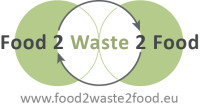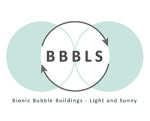
Benefits
Maximum benefit for communities, by offering local waste handling, locally produced fresh food, energy and pure water.
The deposition of bio-waste using a closed, all-season Innovative Greenhouse for the continuous consumption of digestate as a liquid fertiliser for producing organic food, gives a much better business case then the traditional methods, like land-filling or burning. We create a maximum benefit for communities, by offering local waste handling, locally produced fresh food, energy and pure water.
Food2Waste2Food combines waste installations and Innovative Greenhouses. Food2Waste2Food:
- Leads to reduced expenditure on transport for the liquid digestate and the solid fraction of digesters.
- Produces excess digestate (especially phosphate), biogas, heat, etc. that can be sold on the local market. The energy is classified as bio-energy.
- Reduces the gate-fees from waste-treatment.
- Contribute to urgent global challenges related to food, clean water and energy
- Leads to a lower burden of the sewerage network, and thus lowers maintenance.
Food2Waste2Food is very area-efficient and does not claim new agricultural areas. Food2Waste2Food:
- Minimises the occupation of land by using wastelands, deserts and dry lands.
- Increase yields, allows for a year-round growing season, and attracts out of season premium prices, leading to lower capital costs.
- Eliminates the climate impact from conventional greenhouse crop production due to fossil fuel use and CO2 losses due to current ventilation (non-closed) practices. F2W2F lowers the costs for energy used. The energy use in a standard greenhouse sector is 30-50% of the business costs. The sector is in need to cut the energy costs by saving fossil fuel, using other means of energy, deliver electricity and heating to nearby communities and businesses.
- Uses CO2 from burning biogas. A greenhouse needs a source of CO2, normally from burning fossil fuel.
- Has very limited ventilation, thus saving CO2 (normally released by ventilation), leading to lower operational costs.
Food2Waste2Food needs less input than usual processes. We strive to attain a minimal input of non-local or non-renewable resources, and substitute these with local wastes that needs to be handled and with a sophisticated reuse within the process:
- Reuse of all the water in the process; the main ‘water losses’ is the water uptake by the plants. Thus we use 90% less water than a standard greenhouse.
- Substitution of peat.
- No artificial fertilisers.
- No fossil fuels.
- No use of pesticides at all.





